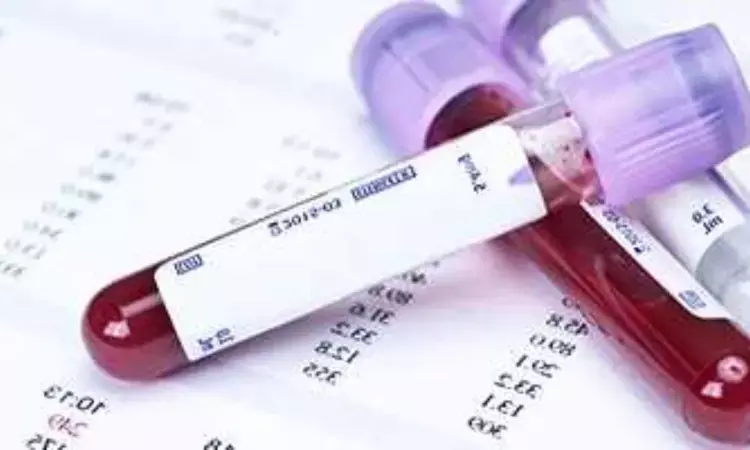- Home
- Medical news & Guidelines
- Anesthesiology
- Cardiology and CTVS
- Critical Care
- Dentistry
- Dermatology
- Diabetes and Endocrinology
- ENT
- Gastroenterology
- Medicine
- Nephrology
- Neurology
- Obstretics-Gynaecology
- Oncology
- Ophthalmology
- Orthopaedics
- Pediatrics-Neonatology
- Psychiatry
- Pulmonology
- Radiology
- Surgery
- Urology
- Laboratory Medicine
- Diet
- Nursing
- Paramedical
- Physiotherapy
- Health news
- Fact Check
- Bone Health Fact Check
- Brain Health Fact Check
- Cancer Related Fact Check
- Child Care Fact Check
- Dental and oral health fact check
- Diabetes and metabolic health fact check
- Diet and Nutrition Fact Check
- Eye and ENT Care Fact Check
- Fitness fact check
- Gut health fact check
- Heart health fact check
- Kidney health fact check
- Medical education fact check
- Men's health fact check
- Respiratory fact check
- Skin and hair care fact check
- Vaccine and Immunization fact check
- Women's health fact check
- AYUSH
- State News
- Andaman and Nicobar Islands
- Andhra Pradesh
- Arunachal Pradesh
- Assam
- Bihar
- Chandigarh
- Chattisgarh
- Dadra and Nagar Haveli
- Daman and Diu
- Delhi
- Goa
- Gujarat
- Haryana
- Himachal Pradesh
- Jammu & Kashmir
- Jharkhand
- Karnataka
- Kerala
- Ladakh
- Lakshadweep
- Madhya Pradesh
- Maharashtra
- Manipur
- Meghalaya
- Mizoram
- Nagaland
- Odisha
- Puducherry
- Punjab
- Rajasthan
- Sikkim
- Tamil Nadu
- Telangana
- Tripura
- Uttar Pradesh
- Uttrakhand
- West Bengal
- Medical Education
- Industry
Ferric carboxymaltose improves Hb levels in patients with iron deficiency anemia: Study

A new study published in the Turkish Journal of Hematology showed that ferric carboxymaltose may raise hemoglobin and ferritin levels in patients with underlying iron deficiency anemia (IDA) when compared to iron sucrose.
A common condition with serious health effects, IDA affects a number of patient demographics, such as those with gastrointestinal issues, severe menstrual bleeding, and chronic illnesses. When quick iron replenishment is required if oral iron formulations are inefficient or poorly tolerated, intravenous (IV) iron treatment is frequently chosen. Iron sucrose (IS) and ferric carboxymaltose (FCM) are commonly used intravenous iron treatments. When compared to IS, FCM enables higher dosages in fewer administrations, which is more practical for both patients and medical professionals.
Controlled iron release is made possible by the combination of FCM, a colloidal iron (III) hydroxide, with carboxymaltose, a carbohydrate polymer. This makes it possible to restore the iron reserves needed for the production of myoglobin, hemoglobin, and other enzyme systems involved in cellular metabolism and oxygen transport.
FCM lowers the risk of oxidative stress by facilitating iron absorption through the reticuloendothelial system without releasing free iron, in contrast to formulations based on dextran. Thus, to thoroughly examine the safety, effectiveness, and tolerance of two widely used IV iron preparations (ferric carboxymaltose and iron sucrose) in adult patients with iron-deficiency anemia, Lokman Tanrıverdi and team carried out this study.
A comprehensive literature search was carried out via PubMed, Web of Science, Ovid Medline, Scopus, and the Cochrane Library until January 1, 2024 to find randomized controlled trials that directly compare FCM and IS therapies in adult patients with IDA. Changes in hemoglobin levels during follow-up were the main result.
There were 14 studies included with a total of 4757 people in all. Hemoglobin and ferritin levels increased nonsignificantly with FCM in comparison to IS. While there was no significant difference in serious adverse events, FCM had a greater risk of hypophosphatemia which was non-significant and was linked to a higher risk of hypersensitive responses than IS.
Overall, the results of this systematic review and meta-analysis found FCM to be more effective than IS at raising hemoglobin and ferritin levels, especially in patients with gynecological conditions that underlie iron deficiency anemia.
Reference:
Tanrıverdi, L. H., & Sarıcı, A. (2025). Efficacy, safety, and tolerability of ferric carboxymaltose and iron sucrose in iron deficiency anemia: A systematic review and meta-analysis of randomized controlled trials. Turkish Journal of Hematology. https://doi.org/10.4274/tjh.galenos.2025.2025.0034
Neuroscience Masters graduate
Jacinthlyn Sylvia, a Neuroscience Master's graduate from Chennai has worked extensively in deciphering the neurobiology of cognition and motor control in aging. She also has spread-out exposure to Neurosurgery from her Bachelor’s. She is currently involved in active Neuro-Oncology research. She is an upcoming neuroscientist with a fiery passion for writing. Her news cover at Medical Dialogues feature recent discoveries and updates from the healthcare and biomedical research fields. She can be reached at editorial@medicaldialogues.in
Dr Kamal Kant Kohli-MBBS, DTCD- a chest specialist with more than 30 years of practice and a flair for writing clinical articles, Dr Kamal Kant Kohli joined Medical Dialogues as a Chief Editor of Medical News. Besides writing articles, as an editor, he proofreads and verifies all the medical content published on Medical Dialogues including those coming from journals, studies,medical conferences,guidelines etc. Email: drkohli@medicaldialogues.in. Contact no. 011-43720751


